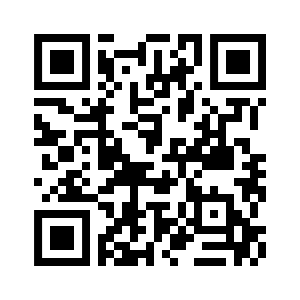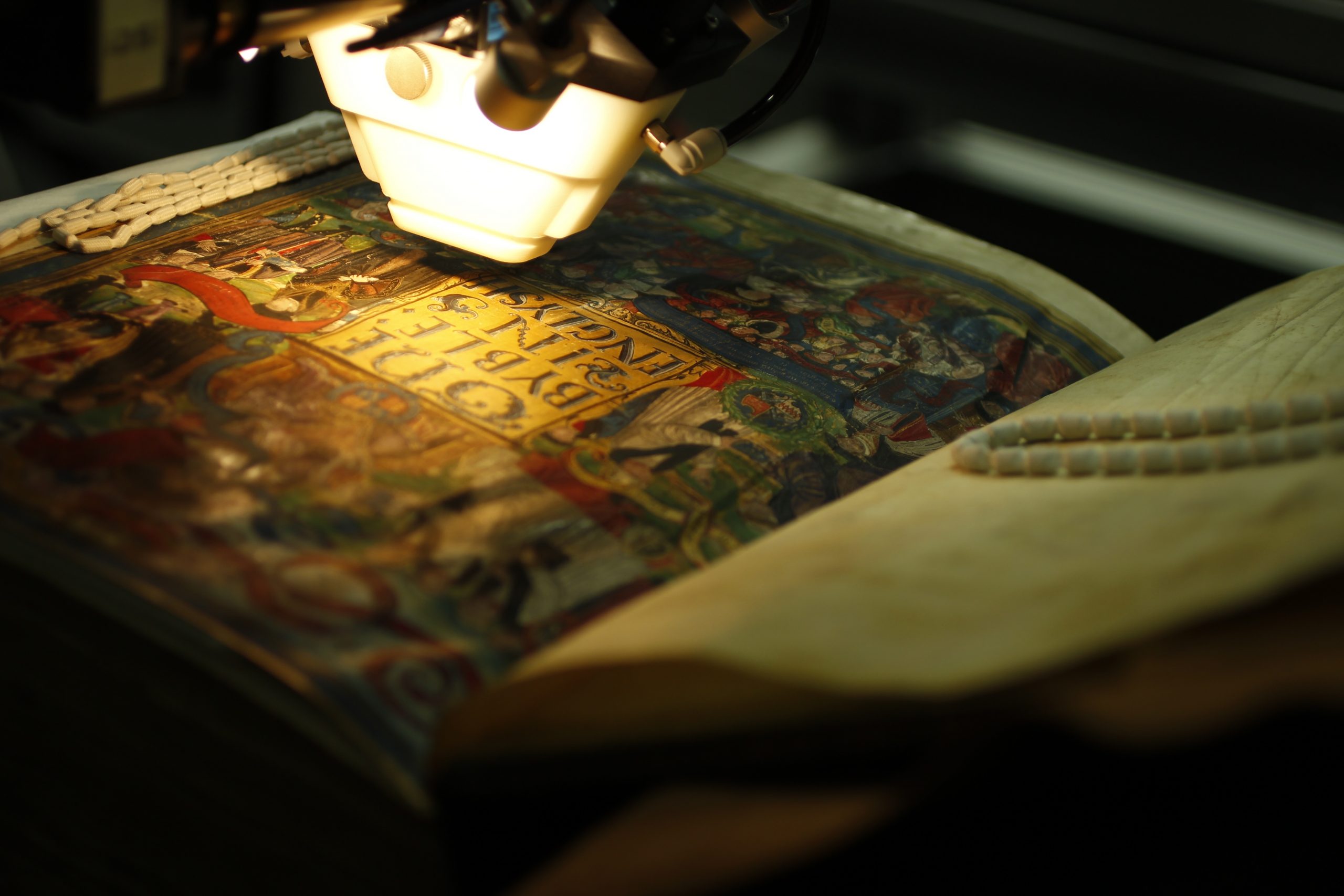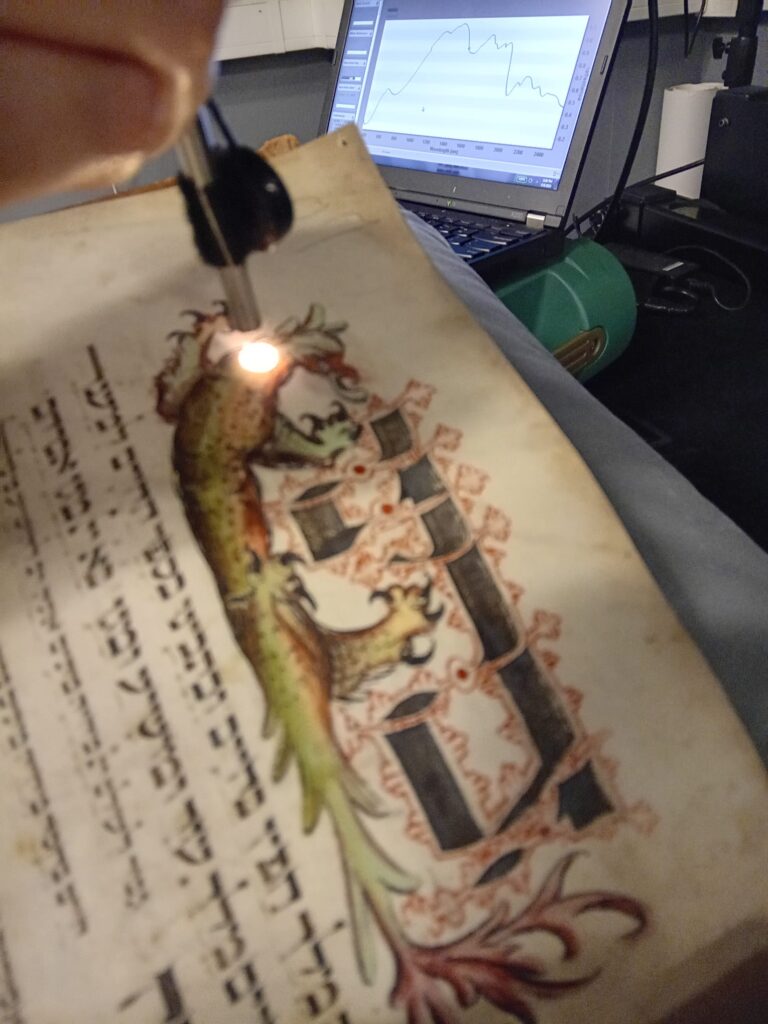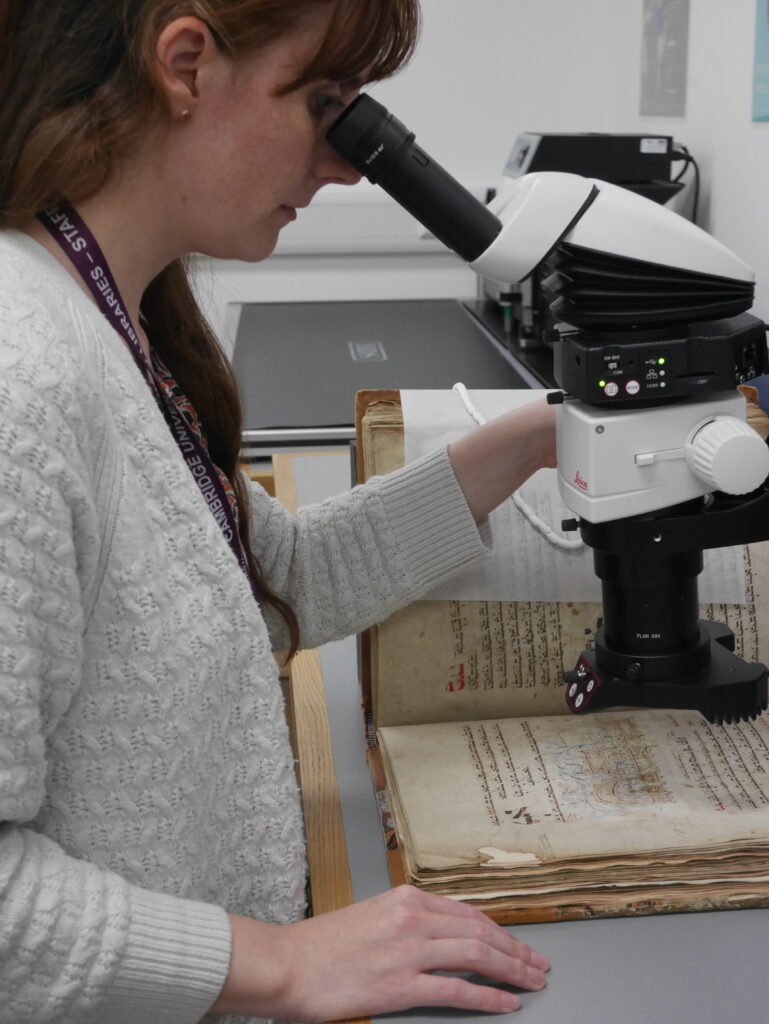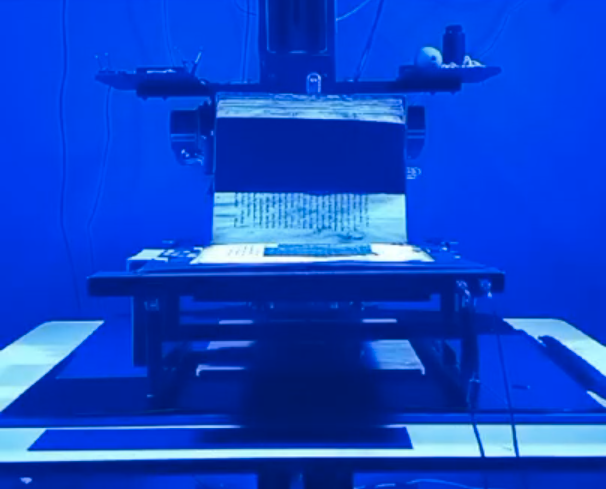The scientific techniques employed in the Hidden in Plain Sight project are crucial for revealing hidden details and gaining deeper insights into the materials of premodern books, particularly in relation to inks, pigments, and parchment surfaces. The most commonly used methods in the project offer non-invasive, highly effective means of analysis, ensuring the preservation of these valuable artifacts. Techniques such as digital microscopy, Fibre Optic Reflectance Spectroscopy (FORS), Multi-Spectral Imaging (MSI), X-Ray Fluorescence (XRF), spectroscopy, and Reflectance Transformation Imaging (RTI) each make a unique contribution to the broader goal of understanding pre-modern religious book production and usage.
By clicking on each scientific method presented below, you can explore how it works, what can be achieved through post-processing analysis, as well as its limitations. Additionally, you’ll find examples from the project to illustrate its applications.
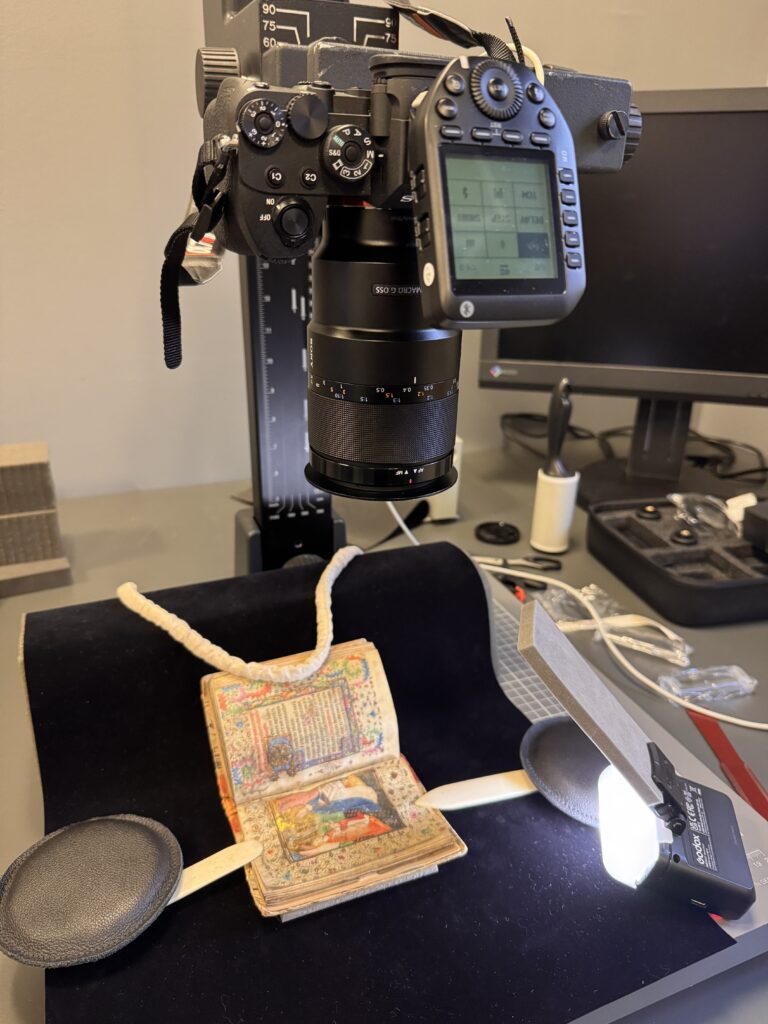
Photometric stereo
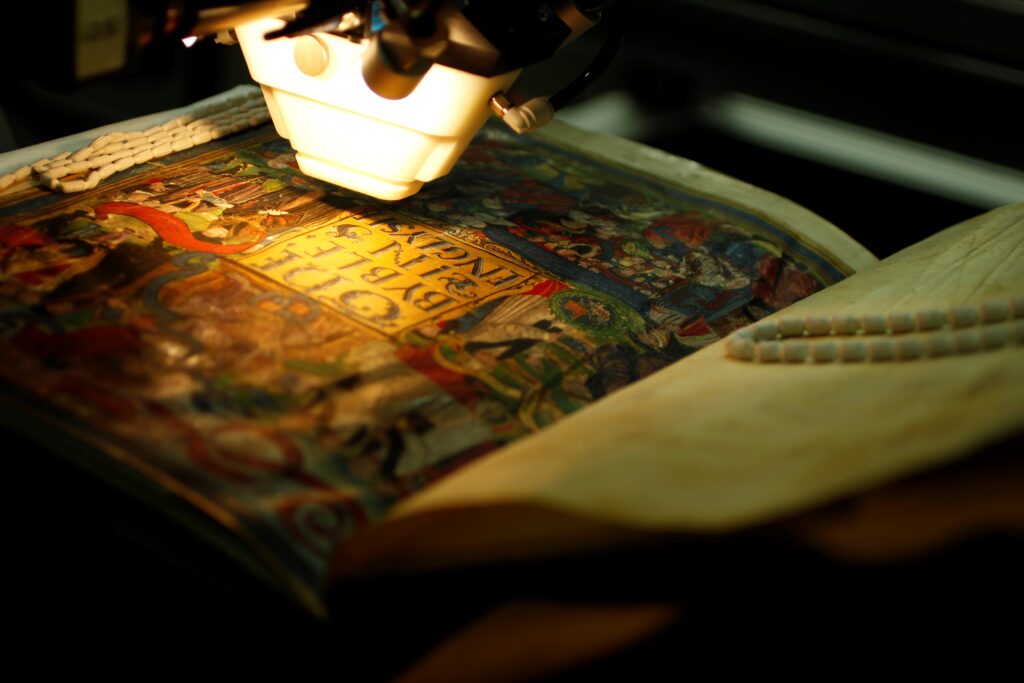
XRF
RTI
ZooMS

